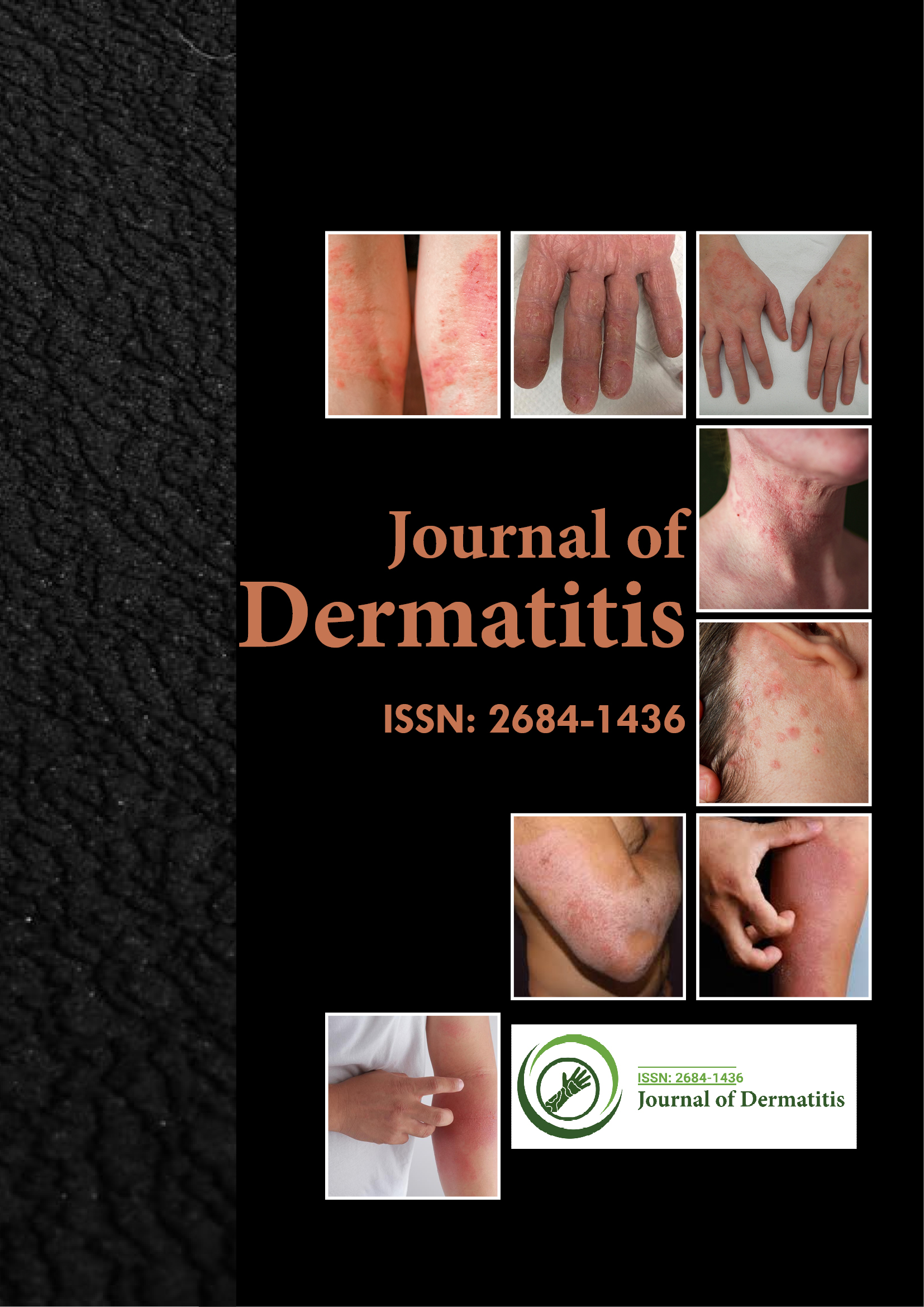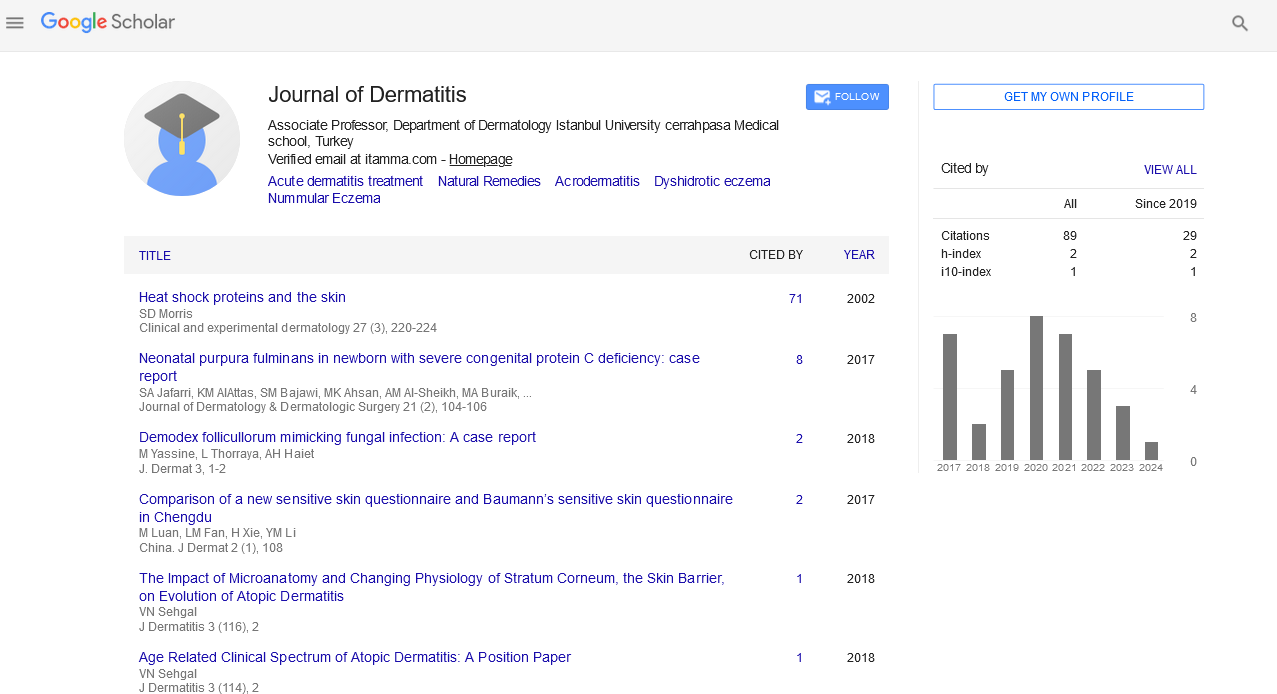Indexed In
- RefSeek
- Hamdard University
- EBSCO A-Z
- Euro Pub
- Google Scholar
Useful Links
Share This Page
Journal Flyer

Open Access Journals
- Agri and Aquaculture
- Biochemistry
- Bioinformatics & Systems Biology
- Business & Management
- Chemistry
- Clinical Sciences
- Engineering
- Food & Nutrition
- General Science
- Genetics & Molecular Biology
- Immunology & Microbiology
- Medical Sciences
- Neuroscience & Psychology
- Nursing & Health Care
- Pharmaceutical Sciences
Perspective - (2023) Volume 8, Issue 1
Allergic Contact Dermatitis: Pathological Diagnosis and its Sanitations
Ershin Ismil*Received: 02-Jan-2023, Manuscript No. JOD-23-20632; Editor assigned: 04-Jan-2023, Pre QC No. JOD-23-20632 (PQ); Reviewed: 18-Jan-2023, QC No. JOD-23-20632; Revised: 25-Jan-2023, Manuscript No. JOD-23-20632 (R); Published: 01-Feb-2023, DOI: 10.35248/2684-1436.23.08.177
Description
When a material that causes an allergic reaction comes into touch with the skin, it can cause an irritation known as allergic contact dermatitis. This condition can be quite uncomfortable and may cause redness, swelling, itching, and blisters. There are many potential causes of allergic contact dermatitis, including exposure to certain chemicals, metals, or other substances.
Causes for allergic contact dermatitis
Some of the most common causes of this condition are mentioned in below.
Poison ivy: This plant contains a chemical called urushiol, which can cause an allergic reaction in many people. When the skin comes into contact with poison ivy, it can become red, swollen, and itchy.
Nickel: It is chemical element of silvery-white lustrous metal and many people are allergic to nickel, which is commonly found in jewelry, zippers, and other metal items. Contact with nickel can cause a rash that is red, itchy, and sometimes blistered.
Fragrances: Perfumes, colognes, and other scented products can contain a variety of ingredients that can cause an allergic reaction in some people. These reactions can range from mild irritation to severe swelling and blistering.
Latex: Some people are allergic to the natural rubber latex used in gloves, condoms, and other products. Contact with latex can cause redness, itching, and swelling.
Cleaning products: Certain cleaning products, such as detergents and disinfectants, can contain harsh chemicals that can irritate the skin and cause an allergic reaction.
Hair dye: Some people may develop an allergic reaction to the chemicals used in hair dye. This can cause itching, redness, and swelling on the scalp and around the hairline.
Prescription medications: Certain medications can cause an allergic reaction in some people. This can lead to a rash, hives, or even more severe symptoms such as difficulty breathing.
If patient suspect that may have allergic contact dermatitis, it is important to visit a doctor for a proper diagnosis. Doctor can examine the patient skin and may recommend patch testing to determine the specific substance that is causing to reaction.
Treatment for allergic contact dermatitis
They are some of the treatment for this condition typically involves avoiding the offending substance and using topical creams or ointments to reduce inflammation and relieve symptoms. In some cases, oral medications may be prescribed to help manage more severe reactions. Prevention is the best approach to allergic contact dermatitis. If a patient knows that they are allergic to a certain substance, make sure they have to avoid it whenever possible. If patients are not sure what is causing to reaction, try to keep track of when and where the symptoms occur and talk to related doctor about possible triggers.
In conclusion, allergic contact dermatitis can be caused by a variety of substances and can range in severity from mild irritation to more severe symptoms. If patient suspect that may have this condition, it is important to visit a doctor for a proper diagnosis and treatment plan. With proper care and avoidance of triggers, most people can effectively manage their symptoms and prevent future reactions.
Citation: Ismil E (2023) Allergic Contact Dermatitis: Pathological Diagnosis and its Sanitations. J Dermatitis. 8:177.
Copyright: © 2023 Ismil E. This is an open-access article distributed under the terms of the Creative Commons Attribution License, which permits unrestricted use, distribution, and reproduction in any medium, provided the original author and source are credited.

